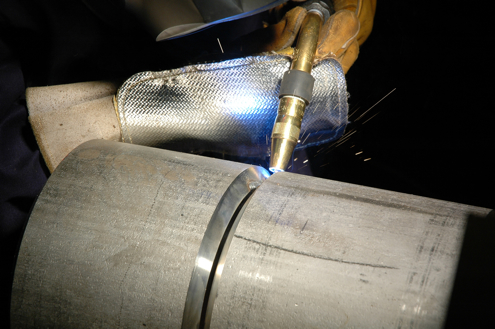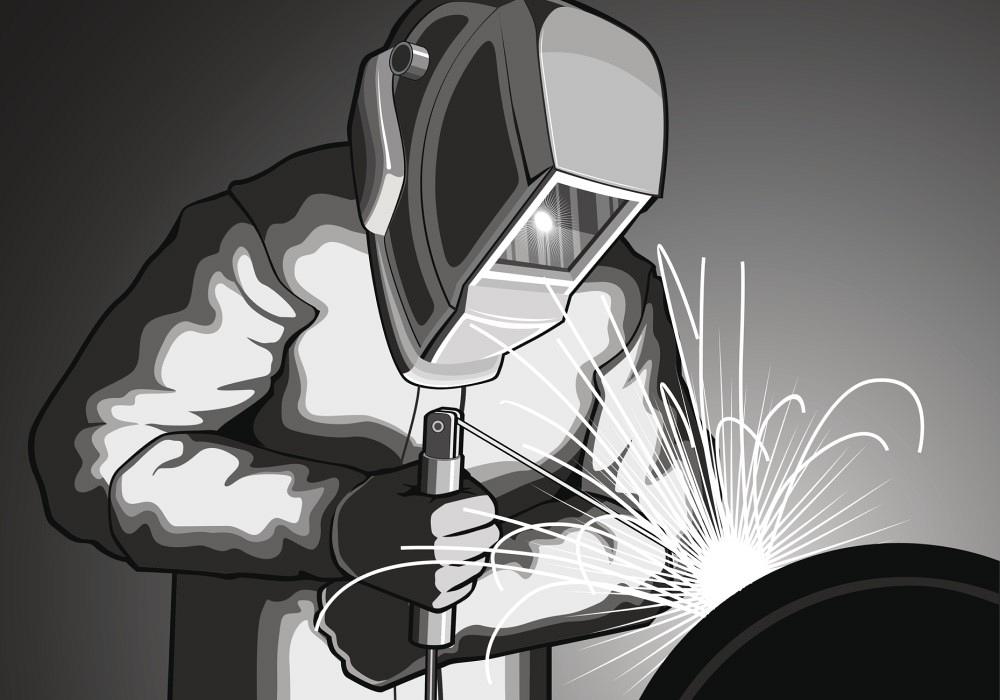How to prevent distortion in Montana Mobile Welding and Repair Welding projects
Usual Welding Fixing Issues and Just How to Address Them Successfully
Welding repairs frequently encounter a variety of problems that can threaten the stability of the end product. Usual problems consist of inadequate penetration, porosity, and imbalance, among others. Each defect presents unique obstacles that need certain approaches for resolution. Comprehending these issues is vital for welders aiming to boost their outcomes and skills. This conversation will certainly check out these typical welding fixing problems and effective methods to resolve them.
Poor Infiltration
Poor penetration takes place when the weld steel stops working to fully fuse with the base product, leading to weak joints and possible structural failings. This issue frequently stems from insufficient warmth input, wrong electrode angle, or inappropriate welding speed. Welders might encounter poor infiltration due to a miscalculation of the needed specifications for a specific material thickness or type. In addition, contamination on the base material's surface can impede reliable bonding, intensifying the issue. To deal with insufficient infiltration, welders must ensure ideal settings on their devices and preserve a clean work surface. Normal evaluation of welds is suggested to recognize any kind of deficiencies early, permitting timely adjustments and the prevention of endangered structural honesty in bonded assemblies.
Porosity
Porosity is a typical issue in bonded joints that shows up as little gas bubbles caught within the weld steel. This issue can endanger the integrity of the weld, causing reduced strength and prospective failure under stress and anxiety. Montana Mobile Welding and Repair. Porosity generally emerges from contamination, moisture, or incorrect welding methods, which allow gases to leave right into the molten weld swimming pool. To address porosity, welders must assure appropriate surface prep work, maintain a clean workplace, and use suitable welding specifications. Additionally, choosing the ideal filler material and protecting gas can reduce gas entrapment. Normal inspection and testing of welds can help determine porosity early, guaranteeing timely corrective actions are taken, thus preserving the quality and reliability of the bonded framework
Misalignment
Misalignment in welding can develop from various factors, including improper configuration and thermal development. Understanding the origin is essential for effective resolution. Numerous modification strategies are readily available to straighten components and assure structural stability.
Sources of Misalignment
Welding imbalance usually comes from a range of underlying concerns that can compromise structural stability. One key cause is inappropriate fit-up of parts prior to welding, which can cause voids and irregular surface areas. Variants in thermal expansion during the welding procedure can likewise lead to distortion, particularly if the products being joined have different coefficients of development. Furthermore, inadequate fixturing and clamping might stop working to hold elements firmly in position, leading to activity during welding. Improperly kept tools, including welding machines and devices, may present incongruities in the weld grain, additional adding to imbalance. Driver error, stemming from insufficient training or experience, can also play a considerable function in producing misaligned welds.

Improvement Techniques Available
Addressing misalignment efficiently needs a mix of corrective strategies customized to the particular problems available. One typical technique is the use of components or jigs to hold elements in the appropriate position during welding, making certain regular placement. Furthermore, preheating the products can help in reducing distortion and enhance fit-up. For substantial imbalance, mechanical adjustment techniques, such as using hydraulic jacks or clamps, can be utilized to remedy the setting before welding. Post-weld warmth treatment might likewise be required to soothe stresses brought on by misalignment. Ultimately, mindful evaluation and adjustment during the setup stage can prevent imbalance problems from becoming significant problems, promoting a smoother welding process and improving total structural honesty.
Distortion
Distortion is an usual challenge in welding that can emerge from different variables, including irregular heating and cooling. Recognizing the sources of distortion is vital for executing effective prevention methods. Resolving this issue not only boosts structural integrity however likewise improves the general top quality of the weld.
Sources of Distortion
When subjected to the extreme heat of welding, materials typically undertake adjustments that can cause distortion. This sensation largely emerges from thermal expansion and contraction throughout the welding procedure. As the weld location warms up, the product expands; upon cooling, it gets, which can develop interior stress and anxieties. Additionally, irregular home heating across a work surface can exacerbate these stress and anxieties, resulting in warping or flexing. The kind of material also plays a substantial function; metals with differing thermal conductivity and coefficients of expansion might react in a different way, bring about unforeseeable distortions. In addition, inadequate joint layout and insufficient fixturing can add to imbalance during welding, raising the probability of distortion. Recognizing these reasons is essential for effective welding repair service and avoidance strategies.
Prevention Techniques
Efficient prevention methods for distortion during welding concentrate on regulating heat input and making certain proper joint design. Maintaining a constant heat input aids to Extra resources reduce thermal expansion and contraction, which can lead to distortion. Utilizing strategies such as preheating the workpiece can also decrease the temperature slope, promoting consistent heating. Furthermore, picking ideal joint designs, such as T-joints or lap joints, can boost security and lower stress focus. Executing proper fixturing to safeguard the work surfaces in position even more help in keeping placement during the welding process. Staggered welding series can distribute warmth a lot more evenly, preventing local distortion. By applying these approaches, welders can greatly reduce the likelihood of distortion and improve the total quality of their welds.
Splitting
Splitting is a typical issue experienced in welding fixings, typically resulting from various elements such as inappropriate cooling prices, material selection, or insufficient joint preparation. The incident of fractures can greatly compromise the stability of the weld, leading to prospective failings throughout procedure. To resolve this problem, welders need to initially assess the origin triggers, making certain that materials are suitable and suitably chosen for the specific application. In addition, regulating the air conditioning rate throughout the welding process is essential; quick cooling can induce stress and result in breaking. Proper joint layout and prep work also contribute to reducing the risk. Implementing these methods can boost weld high quality and sturdiness, ultimately reducing the likelihood of cracking in completed weldments.

Incomplete Combination
A significant problem in welding fixings is incomplete blend, which happens when the weld metal does not adequately bond with the base material or previous weld passes - Montana Mobile Welding and Repair Belgrade Fabrication. This flaw can cause weak points in the joint, possibly jeopardizing the honesty of the bonded framework. Variables adding to insufficient fusion consist of not enough warmth input, inappropriate welding method, and contamination of the surface areas being signed up with. To address this concern efficiently, welders should ensure correct pre-weld cleaning and surface prep work, along with readjust their welding specifications to achieve more appropriate infiltration and fusion. Routine inspection throughout the welding procedure can also help identify insufficient fusion early, permitting timely corrective procedures to boost the total quality of the weld
Overheating
While welding repair work can boost architectural stability, overheating offers a substantial obstacle that can bring about product destruction. Excessive heat throughout welding can modify the mechanical buildings of steels, leading to lowered strength, enhanced brittleness, and warping. This sensation is specifically crucial in high-stress applications where architectural integrity is vital. Recognizing overheating can involve aesthetic examinations for staining or distortion, in addition to checking temperature throughout the welding procedure. To alleviate the threats connected with getting too hot, welders should use suitable methods, such as regulating heat input, readjusting travel speed, and making use of appropriate filler materials. Additionally, implementing pre- and post-weld heat therapies can aid restore material buildings and enhance the overall top quality of the repair, ensuring lasting efficiency and security.
Regularly Asked Inquiries
What Are the Common Indicators of a Welding Flaw?

Just How Can I Examine My Welds for Top quality?
To evaluate welds for high quality, cjp weld one can make use of visual assessments, ultrasonic screening, and radiographic methods. Each method assures architectural stability, recognizes flaws, and verifies adherence to defined standards, eventually improving the reliability of the welded joints.
What Safety and security Safety Measures Should I Take While Welding?
When welding, one must prioritize safety and security by using appropriate individual safety tools, guaranteeing appropriate air flow, securing flammable products away, preserving a clean work space, and recognizing environments to stop mishaps and injuries.
Can I Repair a Weld Without Redoing the Entire Joint?
Repairing a weld without redoing the whole joint is feasible, depending upon the damage (Montana Mobile Welding and Repair Belgrade Fabrication). Methods such as grinding, including filler material, or using a welding procedure can efficiently address certain flaws while preserving the surrounding structure
What Equipment Are Important for Efficient Welding Repairs?
Necessary devices for effective welding repairs consist of a welding machine, wire brush, mill, protective gear, clamps, and filler materials. Each tool plays a crucial function in making certain high quality and security during the repair service procedure. Porosity commonly arises from contamination, dampness, or improper welding methods, which permit gases to escape right into the molten weld swimming pool. Inadequately conserved equipment, including welding makers and tools, may present disparities in the weld grain, further adding to imbalance. When subjected to the intense warmth of welding, materials typically undertake changes that can lead to distortion. Breaking is a typical problem experienced in welding fixings, often resulting from numerous elements such as improper air conditioning prices, material option, or poor joint preparation. A significant concern in welding repairs is incomplete blend, which happens when the weld steel does not appropriately bond with the base product or previous weld passes.